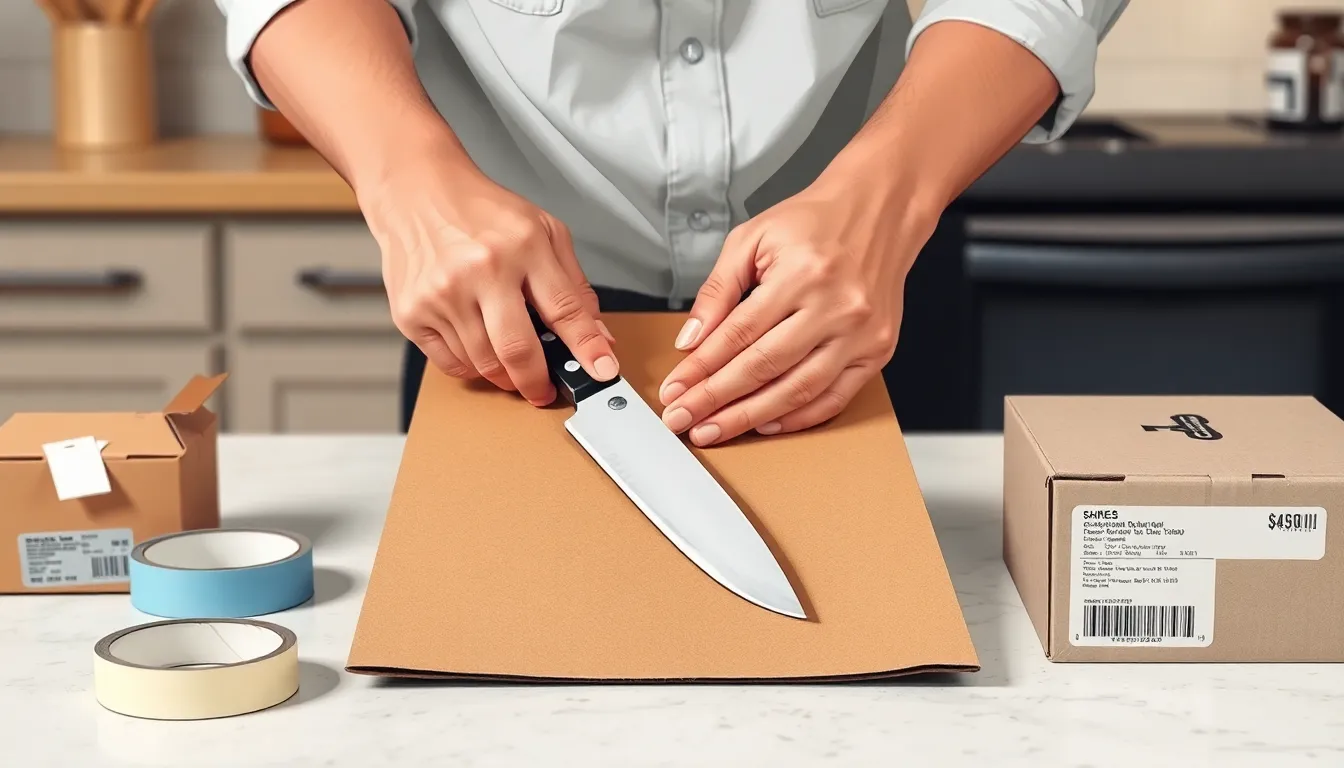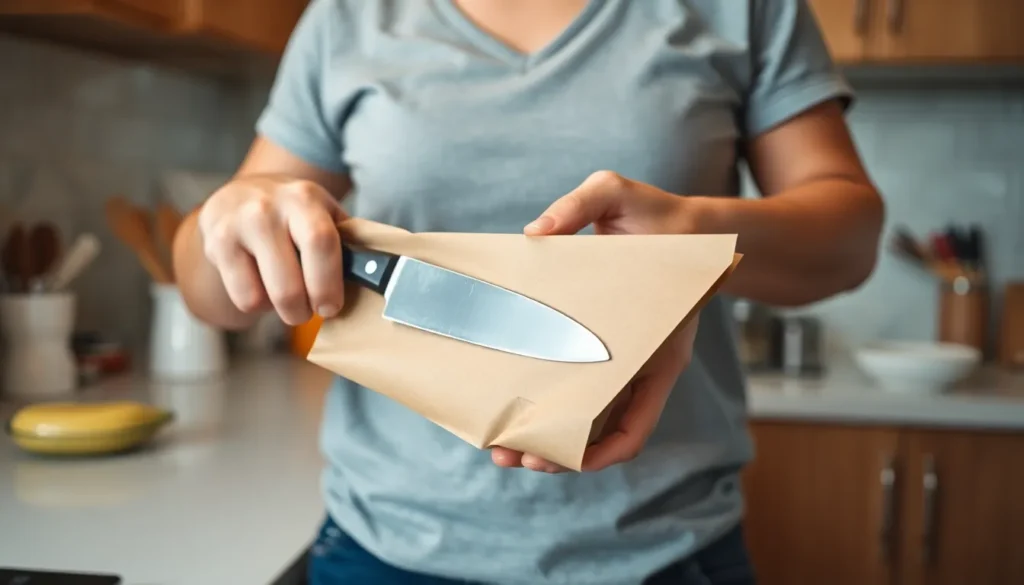Table of Contents
ToggleKnives can be sharp in more ways than one, and when it’s time to part ways with those old blades, it’s not as simple as tossing them in the trash. Whether they’re duller than a butter knife or just plain dangerous, knowing how to dispose of knives safely is crucial. After all, nobody wants to be the reason the trash collector has a bad day—or worse, a trip to the ER.
Understanding Knife Disposal
Disposing of knives involves careful consideration to prevent harm and ensure safety. Understanding the proper methods can make a significant difference in safe disposal practices.
Importance of Proper Disposal
Proper disposal of knives reduces risks to waste collectors and the general public. Discarding knives improperly can lead to injuries from cuts and punctures. Many cities require specific disposal methods, emphasizing safety. Safely packaging knives before disposal helps prevent accidents, which is crucial for both collection workers and the community. Local guidelines often provide instructions tailored to knife types, ensuring effective handling.
Environmental Considerations
Environmental impacts of knife disposal deserve attention. Many knives contain metals and other materials that can harm ecosystems if not disposed of correctly. Recycling offers a sustainable option, allowing metal components to be reused and reducing landfill waste. Communities increasingly support metal recycling programs for such items. Responsible disposal methods prevent toxic substances from entering landfills, which is essential for maintaining a healthy environment.
Safe Methods for Throwing Away Knives

Proper disposal of knives involves specific methods to ensure safety and adherence to local regulations. Knowing these methods can prevent injuries while supporting environmental considerations.
Donate or Recycle
Donating or recycling knives promotes sustainability and provides positive alternatives to discarding. Many organizations accept gently used kitchen knives, benefiting local communities. Furthermore, recycling facilities often reclaim metal from knives, redirecting materials from landfills. Before donating, individuals should ensure knives are in good condition, as charities typically prefer functional items. Check local scrap metal recyclers as well; they might accept old knives in exchange for cash or as part of a recycling program.
Disposal in Household Trash
Disposing of knives in household trash requires careful packaging to avoid injury. First, wrap knives securely in thick materials like cardboard or bubble wrap. After wrapping, use tape to secure the package and clearly label it as “sharp.” Additionally, placing it inside a sturdy box reduces the risk of cuts during collection. Some municipalities offer specific guidelines for sharp objects, so researching local regulations is essential. If municipal guidelines suggest alternative disposal methods, those should be prioritized over trash disposal practices.
Alternative Disposal Options
Exploring alternative disposal options for knives enhances safety and promotes sustainability. Various programs and initiatives exist to aid in responsible knife disposal.
Municipal Hazardous Waste Programs
Many municipalities offer hazardous waste programs for the proper disposal of knives. These programs often schedule regular collection days or provide drop-off locations. Utilizing these services ensures that harmful materials are handled appropriately. Residents benefit from this option as it eliminates risks associated with regular trash collection. Local waste management authorities typically outline guidelines for participating in these programs.
Knife Trade-in Programs
Knife trade-in programs present an innovative way to dispose of unwanted knives. Certain retailers and manufacturers accept old knives in exchange for discounts on new ones. These initiatives encourage recycling while keeping sharp objects out of landfills. Customers gain savings on future purchases and contribute to environmental sustainability. Researching local options can reveal available trade-in opportunities in nearby stores.
Safety Tips When Disposing of Knives
Disposing of knives safely is a crucial step to prevent accidents. Implementing the right safety measures protects everyone involved in the disposal process.
Protecting Yourself and Others
Always approach knife disposal with caution. Ensure that no one is around while handling sharp objects. Use thick, cut-resistant gloves to reduce the risk of cuts. When passing knives, hand them with the handle facing forward to minimize the chance of injury. Encourage family members to be aware of where the knives are placed during disposal. Educating others on the importance of safe handling helps maintain a safe environment. Be mindful of local waste collector safety practices to further ensure the protection of employees handling the trash.
Packaging Knives for Disposal
Packaging knives properly is essential for safety. Wrap the blades securely in thick cardboard or newspaper to prevent any sharp edges from being exposed. Use tape to hold the wrapping in place firmly. Label the package clearly with a “sharp” or “caution” tag so others can identify its contents. Consider placing the wrapped knives inside a sturdy box or container to provide added protection. Some cities may suggest using specific types of packaging, so researching local guidelines enhances safety. A well-sealed package minimizes the risk of injury for anyone handling the waste.
Safe disposal of knives is crucial for preventing accidents and protecting the environment. By following local guidelines and employing proper packaging techniques, individuals can significantly reduce the risk of injury during disposal. Exploring options like donation and recycling not only promotes sustainability but also benefits the community.
Utilizing municipal hazardous waste programs or participating in knife trade-in initiatives further enhances safety and encourages responsible disposal practices. Taking the time to understand and implement these methods ensures that old knives are discarded safely and responsibly, contributing to a healthier environment for everyone.




